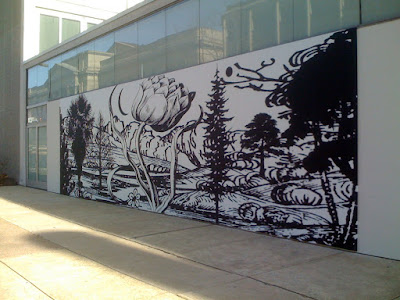
Artists and curators inside Regina Silveira's installation at Moore. Left to Right, top to bottom: Lorie Mertes, Carl Pope, Roman Hasiuk, Jacob Marcineck, Jodie Rice, Jason Hsu, Crystal Stokowski, Matt Leines, Annie Altschuler, Christopher Kline, Pablo Helguera, Francesc Ruiz, Betsebeé Romero, Gunilla Klingberg, Barthélémy Toguo, Ferrán ElOtro, John Caperton, Orit Hofshi, Erick Beltrán, Virgil Marti, Julien Robson, Shelley Langdale, Sheryl Conkelton, Óscar Muñoz, Duke Riley, Tabaimo, José Roca, Mike Gerkovich, Clint Woodside, Bjornstjerne Christiansen, Caroline, Miler Lagos, Christiane Baumgartner.
Philagrafika 2010 is officially open. We at Philagrafika are extremely grateful to all of you that have supported us over the years. The citywide participation exceeded our expectations, and we are very pleased with the outcome: the shows are challenging, stunning and intriguing both visually and conceptually, and they are very different in scope and scale so there will be something that strikes a chord with every visitor.





















































